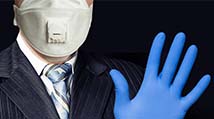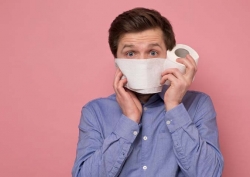 COVID has challenged us all in many ways. One of the many areas slapped squarely in the face is customer experience. Experience is more than service, and is a differentiator for brands. It’s more than saying thank you or delivering a purchase promptly.
COVID has challenged us all in many ways. One of the many areas slapped squarely in the face is customer experience. Experience is more than service, and is a differentiator for brands. It’s more than saying thank you or delivering a purchase promptly.
It’s about how you make someone feel about your brand when they interact with you.
Why is great customer experience important?
It says you took time to think about the customers and how your brand can make their lives better every single time they’re in contact with you.
In normal times, this would be important anywhere a customer might be anxious. Think medical office, pharmacy, repair shop, DMV, utilities companies, etc.
But in this COVID environment, people are worrying about home, friends, children, far-away relatives, their jobs and much more. We can’t know what pressure a customer is facing just by looking, so it’s vital to assume they’re carrying the weight of the world on their shoulders and act accordingly.
Forethought goes a long way to reassuring someone that you have their interests at heart and sincerely want to help.
- Make a plan, then have a conversation with your employees so they know the kind of customer experience you expect them to deliver.
- Be sure you’re treating employees with the same approach and care. They’re stressed, too.
You can't touch or hug. With a mask, you can't reveal your smile. What can you do?
Here are some starter ideas:
- Introduce yourself. Restaurant servers say their names to patrons when they’re seated. But in other settings, customer-facing people don’t. A short “hi, I’m Ashley, and I’m doing (this) for you” begins to establish a rapport and puts customers at ease.
- Speak a little louder. The mask may be muffling your voice. This is especially hard for anyone who has hearing challenges because they can’t hear you and they can’t read your lips. Save them—and yourself—from frustration by being a bit louder and clearer.
- Make your nonverbal communications say what your smile can’t. Raise your eyebrows a bit when you smile or give a slight nod as you look them in the eye. While you can’t touch, you can offer a virtual hug or high-five. Waving or giving a thumbs up never requires contact and helps people feel acknowledged.
- Smile anyway. Even if they can’t see you smile, use it as though people can see it. The smile will come across in your voice.
At TJ Maxx, greeters ask if shoppers would like a cart, then wipe it off with sanitizer for the customer. At a local eye care clinic, there are containers marked “clean pens” and “dirty pens” so patients feel comfortable filling out the paperwork. At Walgreen’s, employees say goodbye to people with “be well” or “take care.”
Use those examples to think about how customers interact with your business. What can you for for them that aligns with your brand and makes them feel valued?
How you treat people in the worst of times is what they’ll remember in the best of times.
Now, more than ever, people want—and need—to feel good about the brands they’re investing in. A well-designed masked customer experience will build loyalty now, and pay dividends when the world is safer.
This article was first published in the January/February 2021 issue of TK Business Magazine. See the whole issue here.



